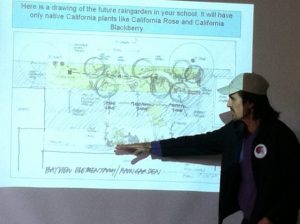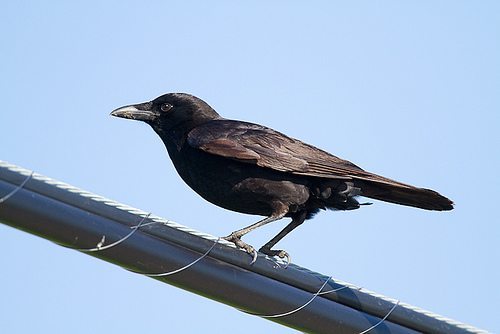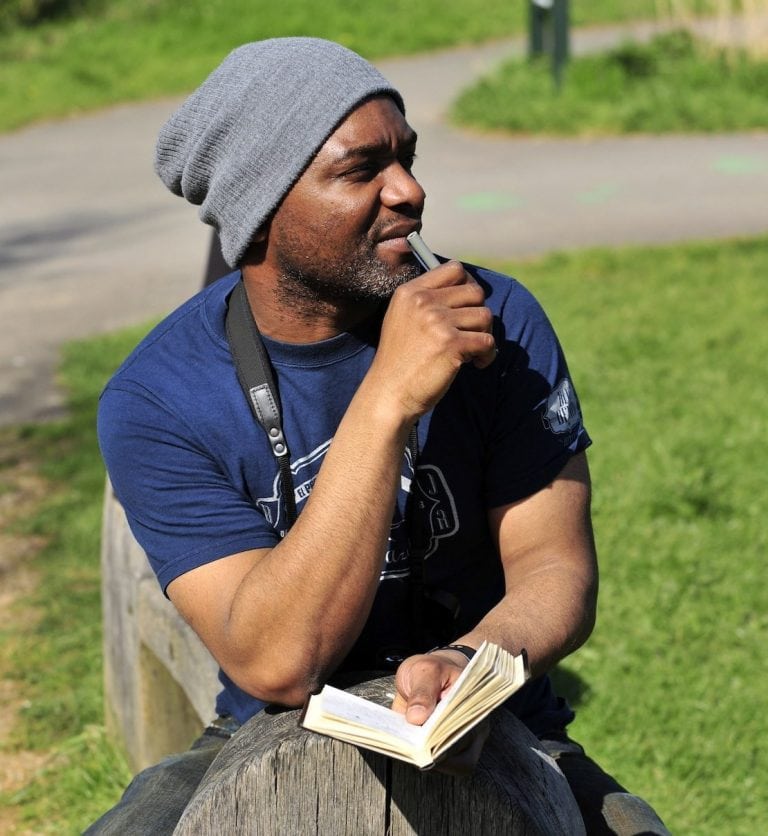A bird-friendly bioswale in Richmond (someday)
By Ilana DeBare
Fifteen wiggly fourth graders crowded into a narrow asphalt strip between their North Richmond schoolyard and the fence bordering Rheem Creek. “You are standing in what may be your future rain garden!” declared landscape architect Bob Birkeland, a volunteer with Golden Gate Bird Alliance’s Eco-Education program.
That didn’t seem to mean much to the kids, who were happy just to be outside on a beautiful spring morning. But then Bob had them look down at the barred storm drain under their feet.
“If I spill soda in here, where’s it going to go?” he asked.
“The creek! The bay! The hummingbirds! The fish!” the kids chorused, remembering their Eco-Ed field trip to the Point Pinole shoreline.
“Right, and do fish like soda?”
“Nooo!”
 Someday... native grasses!
Someday... native grasses!
Bob and his colleague Rich Walkling from Restoration Design Group joined GGBA Eco-Education Director Anthony DeCicco last month to give a hands-on lesson on watersheds, pollution and the future rain garden planned for Bay View Elementary School in Richmond.
A rain garden or bioswale is a planted depression that allows rainwater runoff from paved areas to be absorbed into the soil.
Through its Eco-Education program, Golden Gate Bird Alliance is partnering with Bay View Elementary to design and build a rain garden in an unused section of the asphalt schoolyard. The garden will play a double role — serving as an outdoor environmental study area, and eliminating some of the pollution that flows into the creek and then on into Breuner Marsh, an Important Bird Area along the bay.
 Anthony DeCicco shows Bay View students the plan for the rain garden / Photo by Ilana DeBare
Anthony DeCicco shows Bay View students the plan for the rain garden / Photo by Ilana DeBare
Last month’s rain garden lesson came midway through the year’s Eco-Education curriculum. “Mister Anthony” had already met with the children several other times, including the Pt. Pinole field trip.
Now he began by by displaying a map of North Richmond, from the hills to the bay. “What’s the name of the creek next to your school?” he asked the classroom of about 30 kids, the first of three classes he’d meet with that day. “Creeks and rivers — do they start in the bay or finish in the bay? I guarantee you will know by the end of the day.”
Switching back and forth smoothly between English and Spanish, Anthony showed slides of local wildlife like birds and dragonflies that rely on Rheem Creek.…









